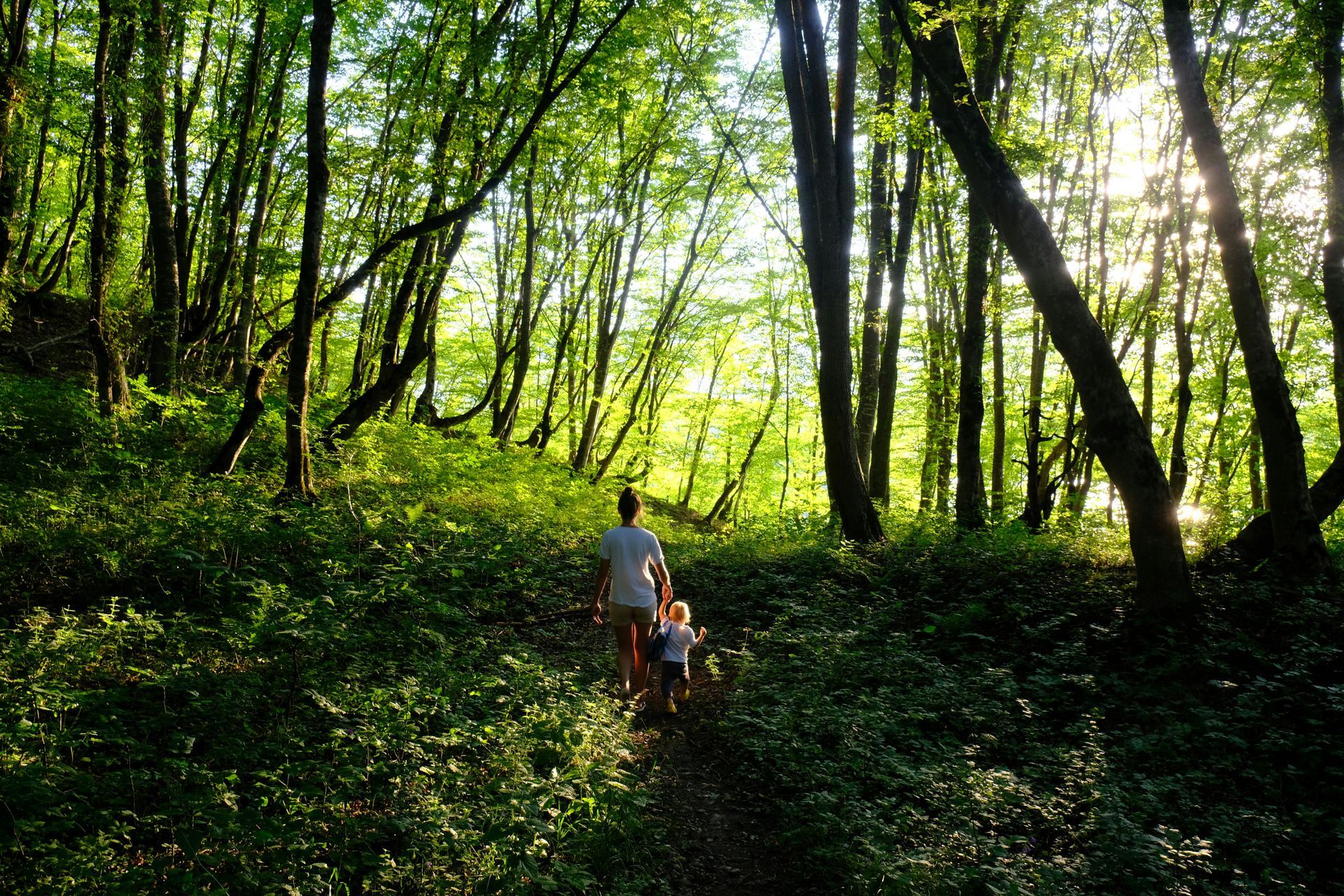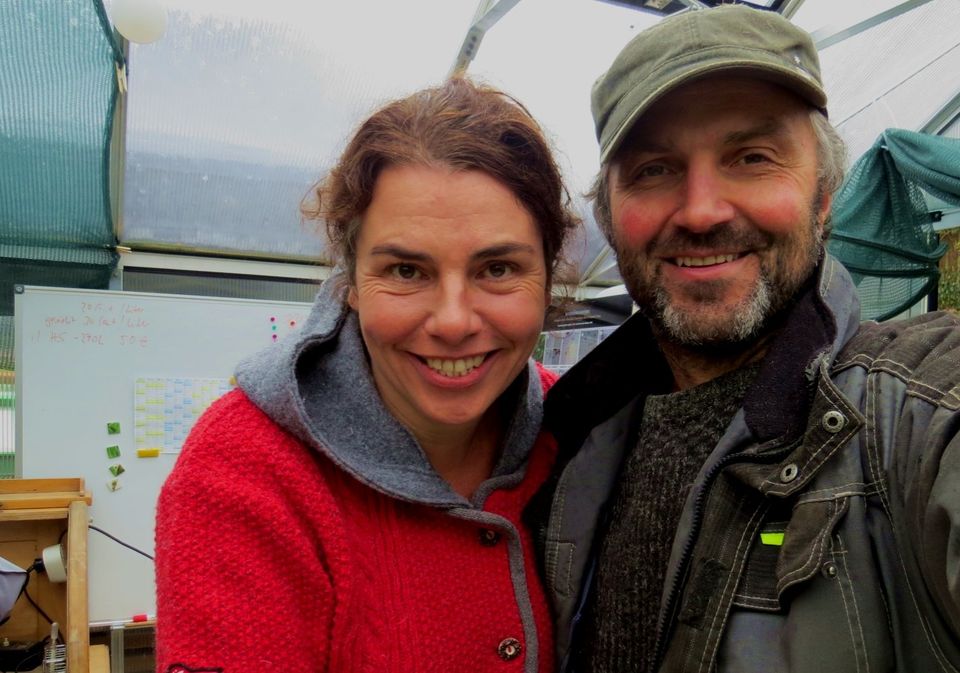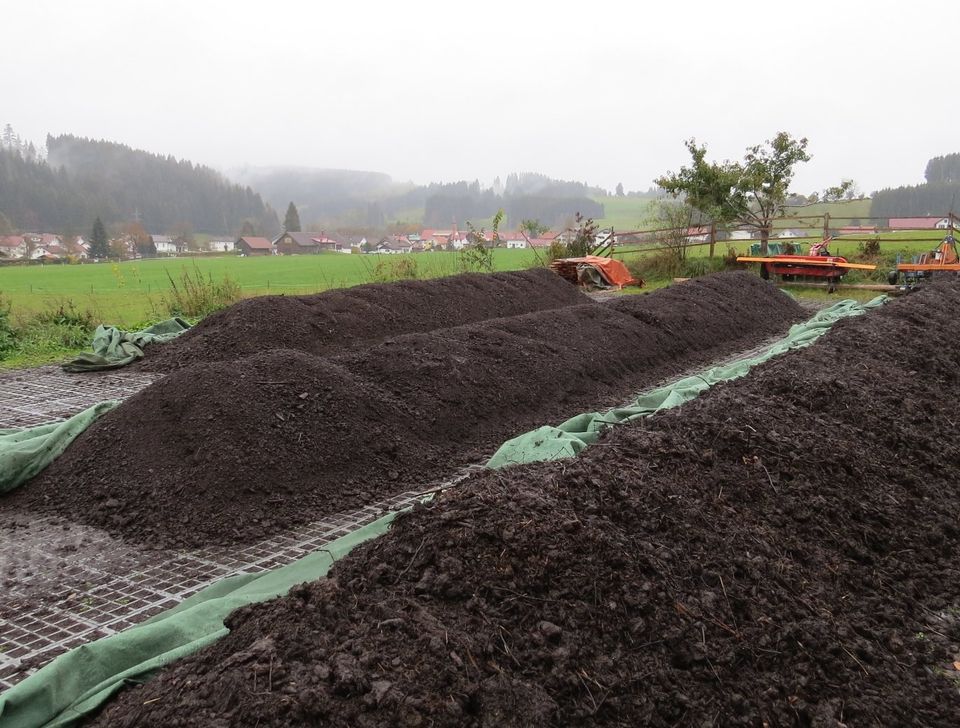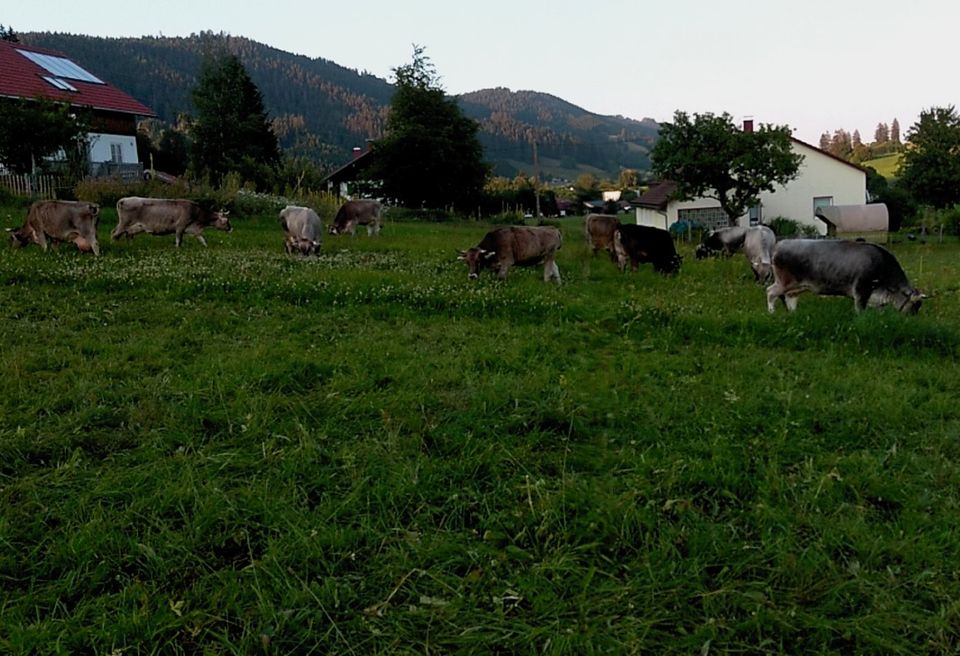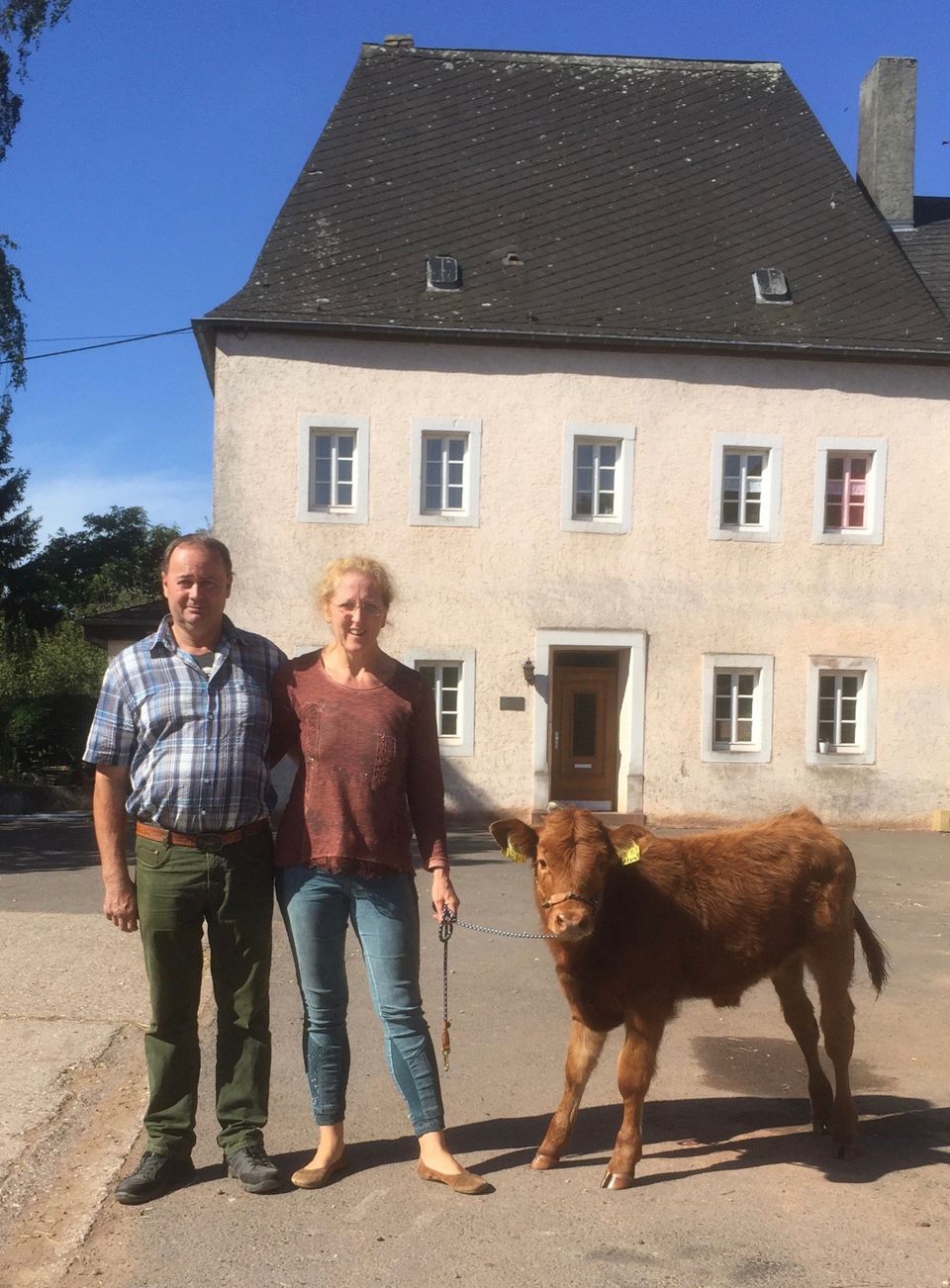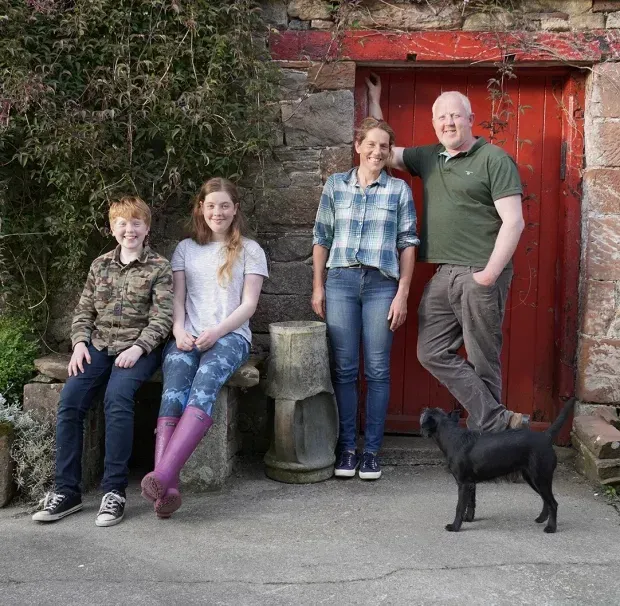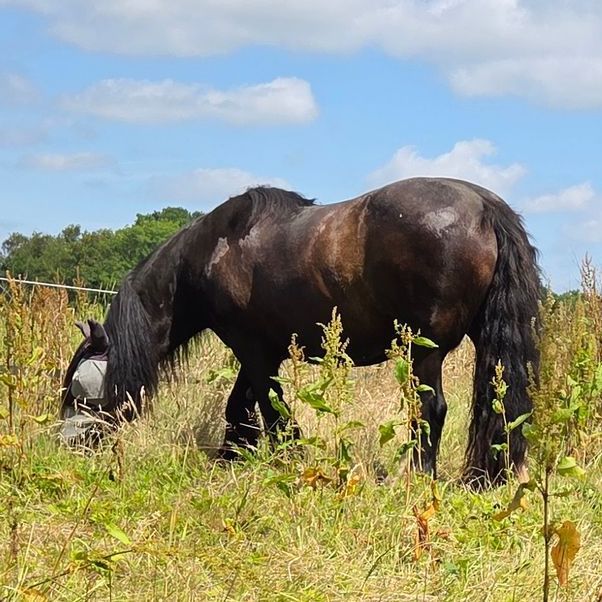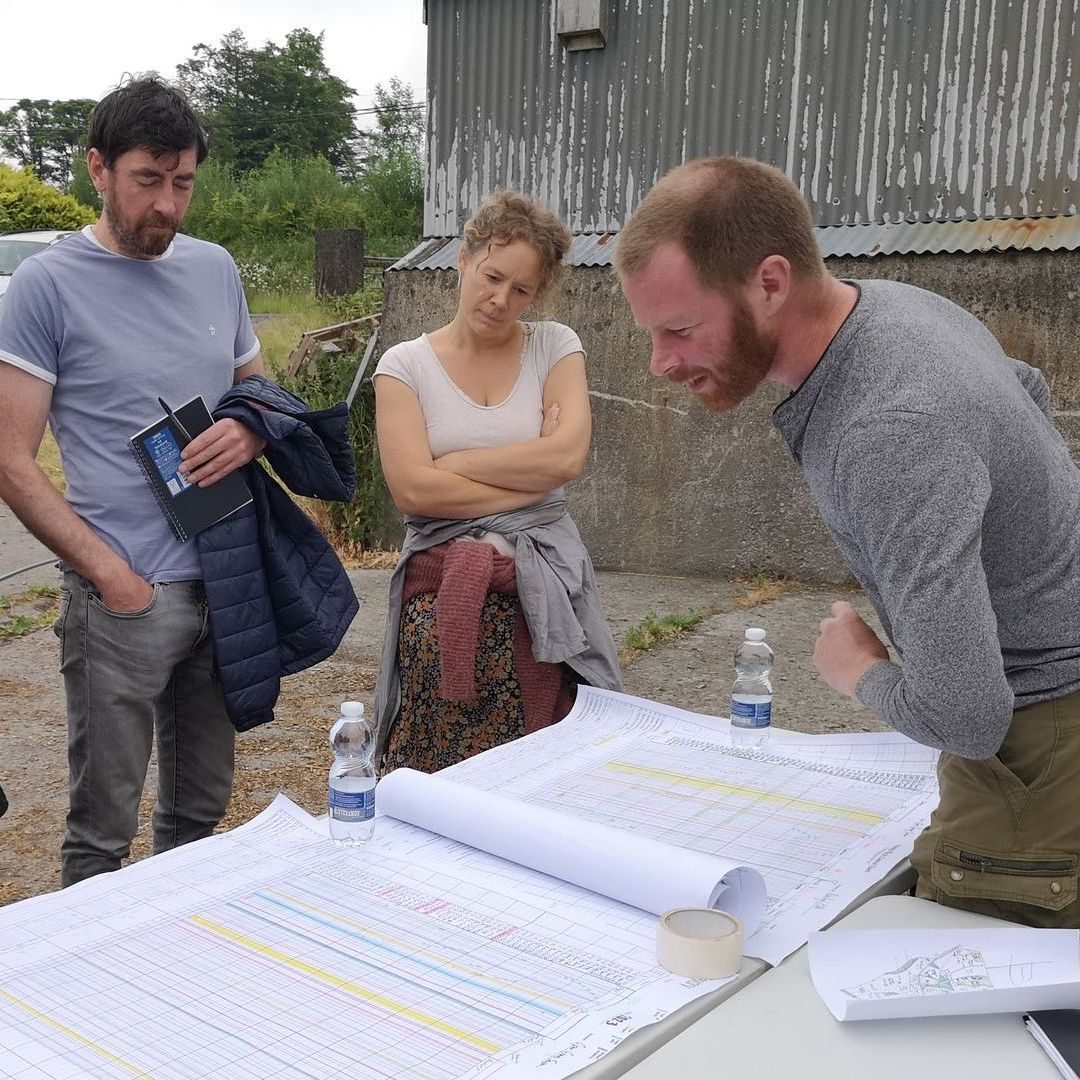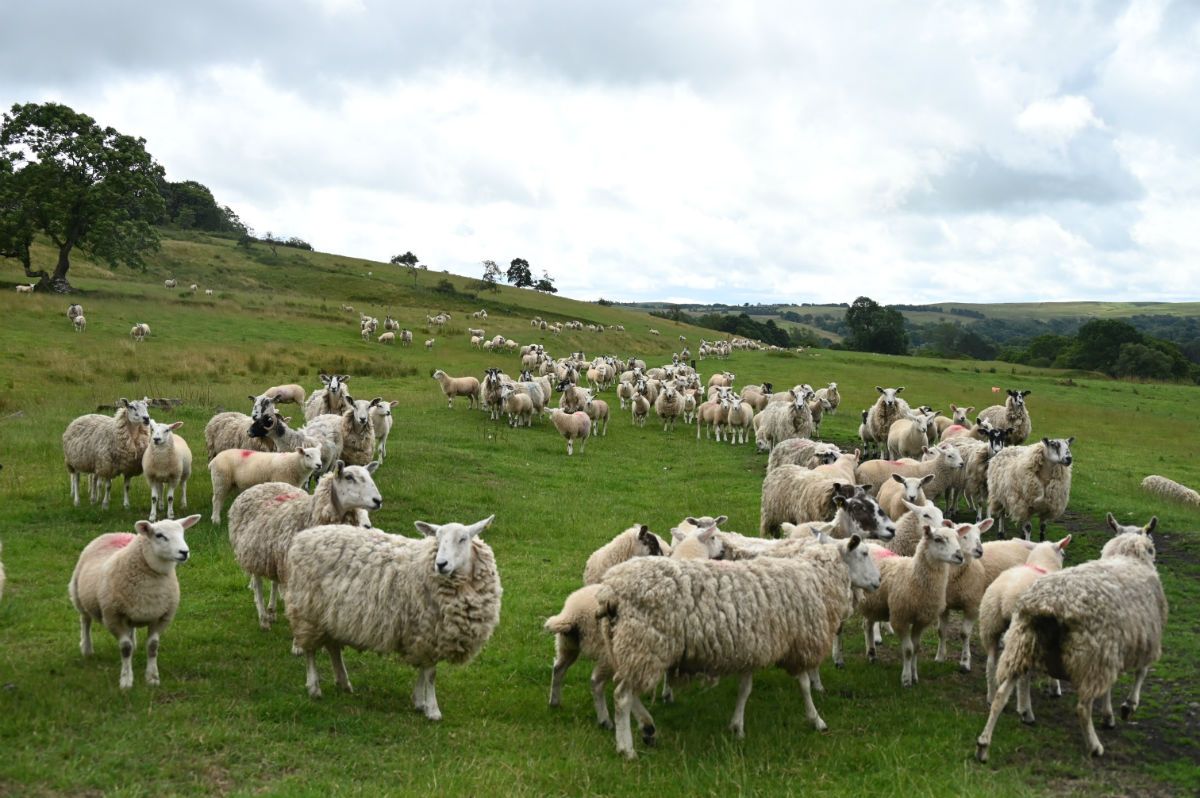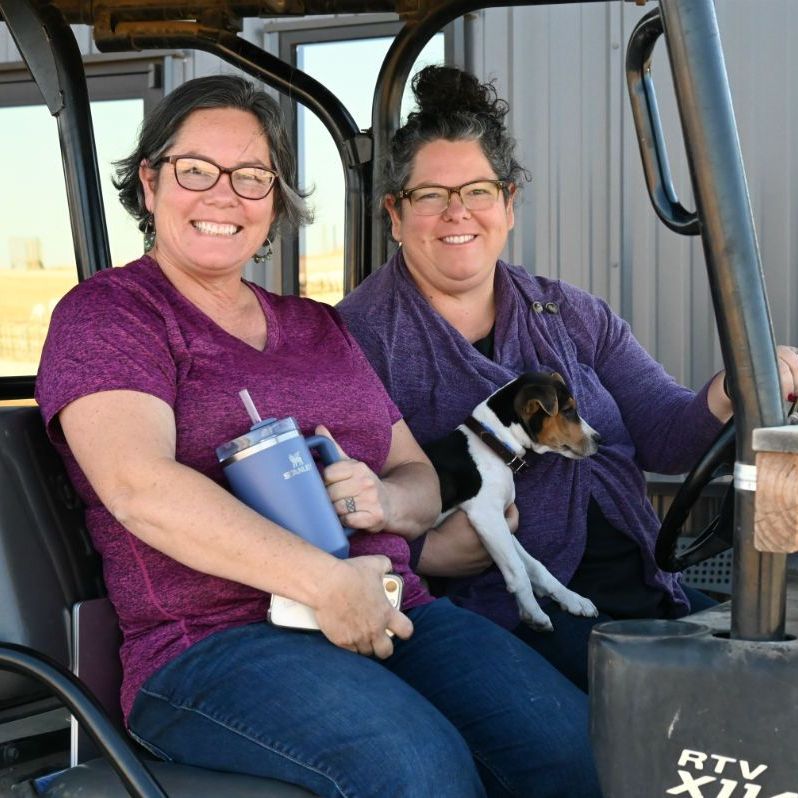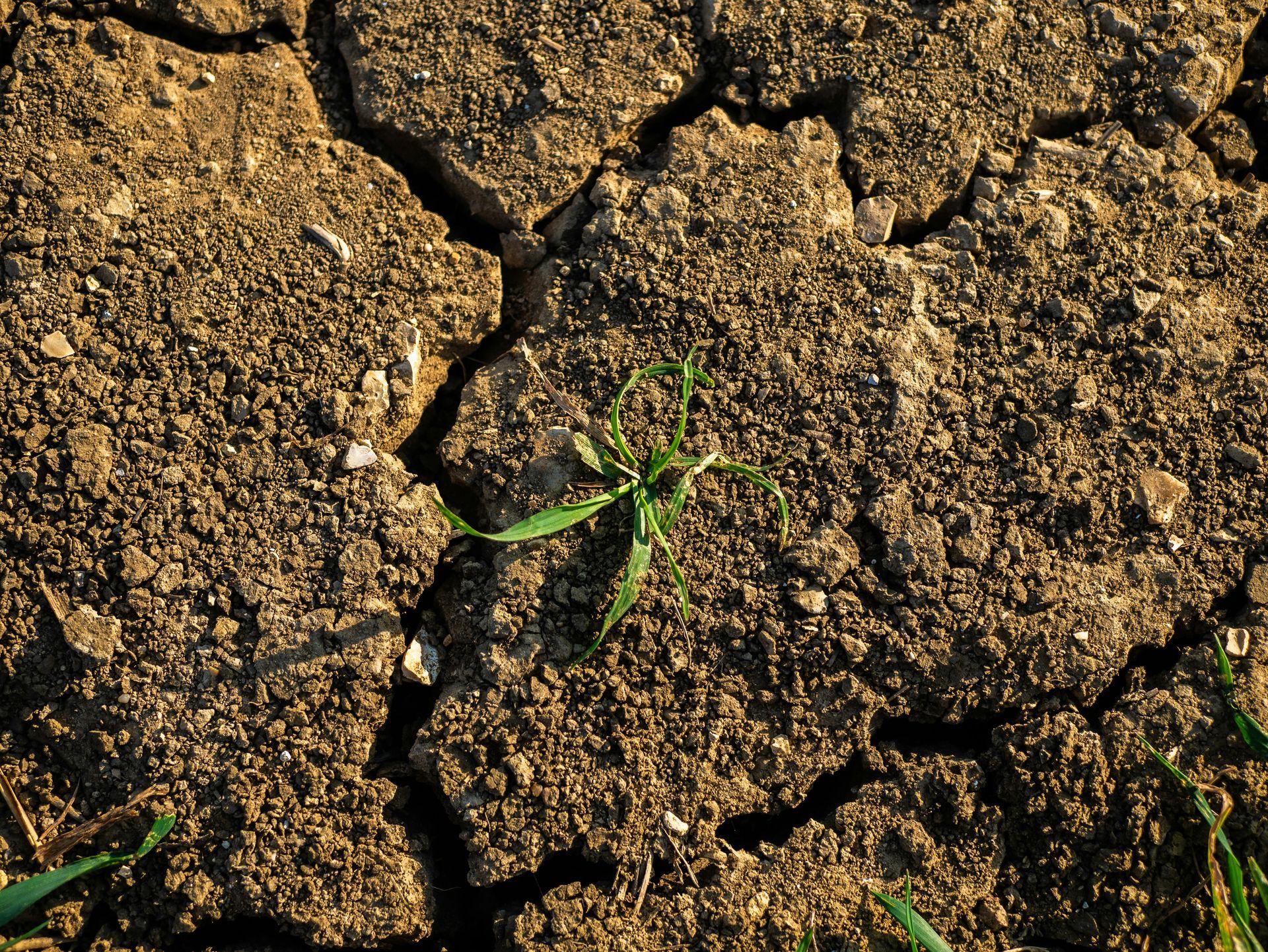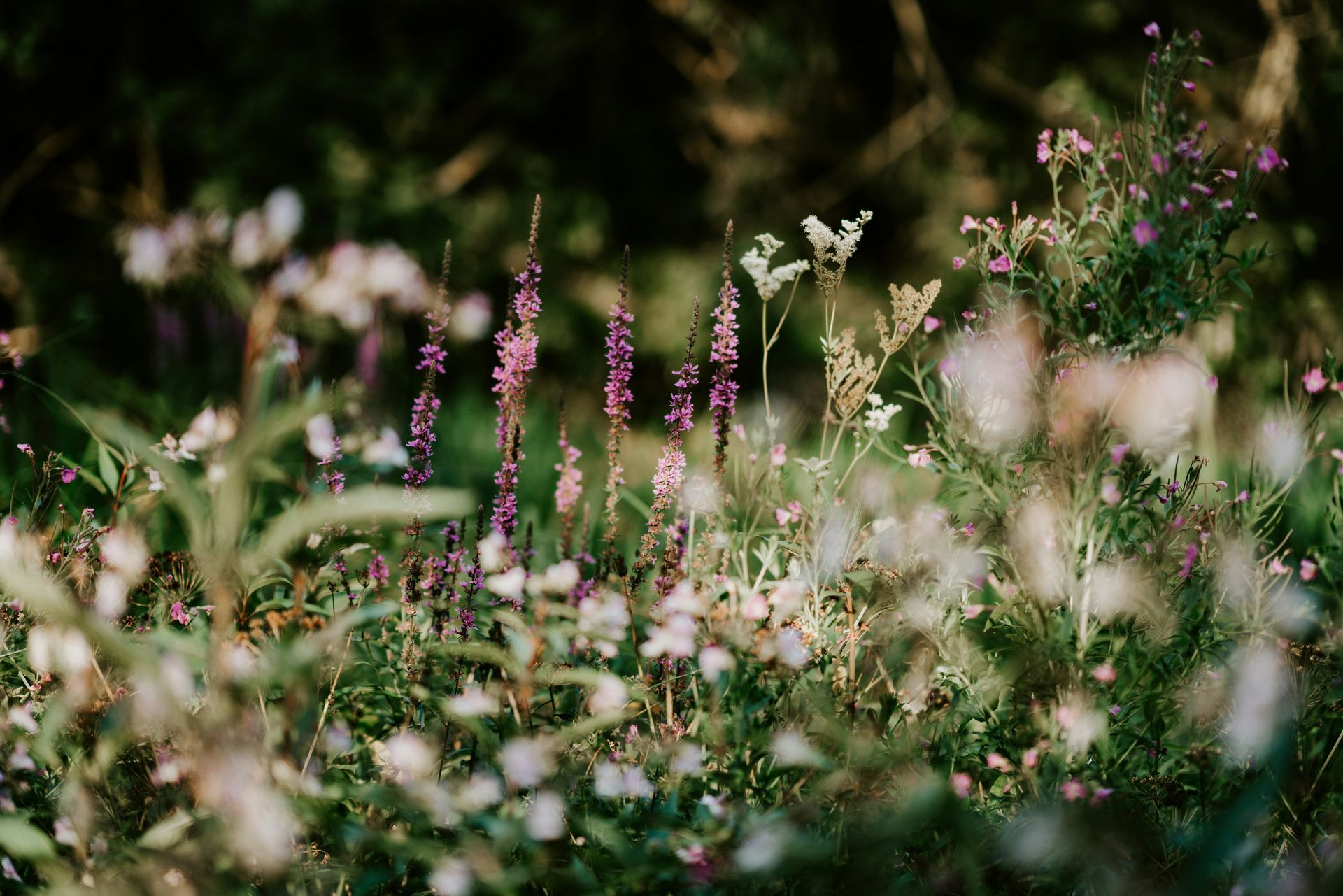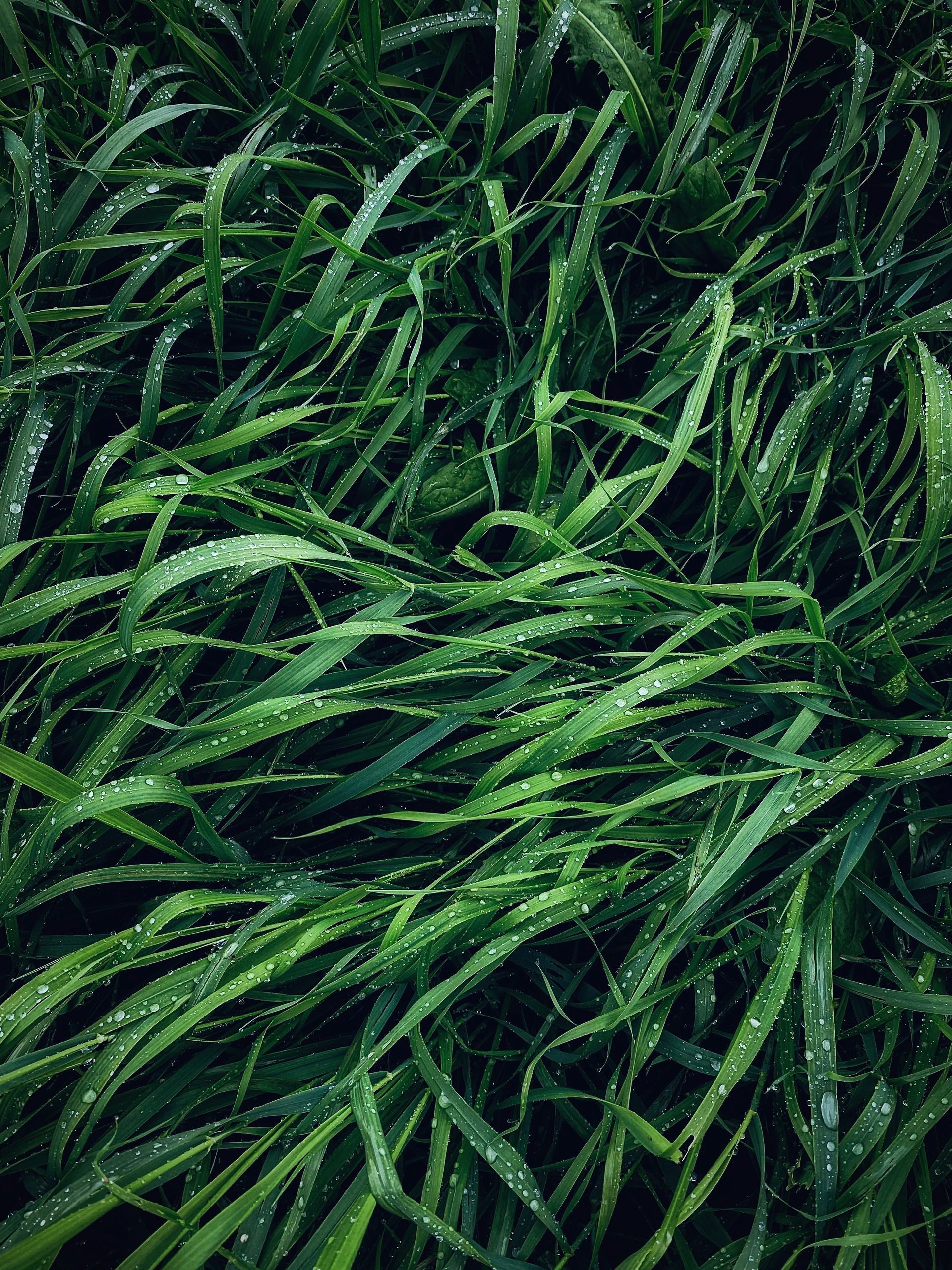Bavarian Climate Prize for Holistically-Managed Farm
"Healing the land", is my life's purpose, says farmer Christine Bajohr
Water shortages started occurring ten years ago in Bavaria causing problems for all farmers. Christine Bajohr and Martin Wiedemann-Bajohr began tackling this challenge back then and today their soils are moist and hydrated even through dry spells. They were recently singled out by the Bavarian government as being climate change experts in agriculture, and were awarded the Bavarian Climate Prize.
The award will enable them to reduce time spent in their part-time jobs, so they can really focus on helping other farmers learn how to farm regeneratively.
Last year, Christine attended 3LM's Holistic Management course in Wittlich, Germany. She will finish off her training this coming March. Please join us, and you can meet a very inspiring German farmer!
What follows is a rough translation of the article, “Allgäuer Bauernblatt” in Farm Magazin Edition 1/2019)
Bavarian Climate Prize for family Wiedemann-Bajohr at KugelSüdhang-Hof / Sibratshofen
"Actually, they do exactly the opposite of what one says to do in consultation - but we were convinced that it was just right for this location and did not adversely affect these difficult areas. They have created a resource-efficient operating concept with a high added value that is optimally adapted to the location and extreme climatic conditions!"
With this testimony, Dr. Anette Freibauer, director of the Bavarian State Research Center for Agriculture - Organic Farming, Soil Culture and Resource Conservation (LfL) in Munich awarded the Bavarian Climate Prize 2018 to the part-time farmers, Christine Bajohr and Martin Wiedemann-Bajohr from Sibratshofen / Weitnau in Oberallgäu. The Allgäuer Farm Magazin interviewed the award winners and asked them to explain what it is that they do differently.
Much, almost everything, is done differently on and around the KugelSüdhangHof farm vs. a conventionally-managed farm. Ten Tyrol grays and browns graze relatively closely but peacefully on the remarkably steep grassland up to 50 degrees in slope. The young cattle are still on the leased areas in Weitnau. From the end of March to the end of November (depending on snow conditions), all day and night they are on pasture - even in winter there is a daily run. Farmer Martin Wiedemann-Bajohr (age 49) takes them to the barn in the mornings and evenings just for milking. The pasture hay milk is supplied by the Demeter organic farm to the Schönegger Käse-alm.
Soil life
Where other farmers have a home garden or a greenhouse, there is a small experimental laboratory for the part-time farmers. Christine Bajohr, works half-days as a medical-technical assistant (MTA) in the diagnostics of a rehabilitation clinic. The rest of the day the 50-year-old farmer's wife takes care of the management of pastures, breeding and rearing, composting, direct marketing and last but not least, to the further development of the regenerative operating concept. Besides, she also does some diagnostics on the farm. If required, she can apply a mixture of 200 liters of rainwater and five kilograms of composter earth produced in a plastic tank to a kind of tea that is aerated with a pump for at least 24 hours. If the microorganisms contained therein have sufficiently multiplied (the development is controlled with the microscope), it can be used to vaccinate compost before the application. In the future, it will help to improve soil life in grassland, for example on the steep surfaces that cannot be reached with a compost spreader. The plants have to pump as much carbon into the soil as possible through photosynthesis, says the farmer's wife. But this is only possible if there is a very active, diverse soil life and the plants are not fertilized. With an active soil life, the plants are not only much healthier, less prone to disease, frost and heat: they can also better absorb the important trace elements for animal health from the soil.
Regenerative agriculture
At some point we realized that we had spent far too much energy, working hours, machinery and money to manage unfavorable land and difficult soil. Despite all efforts, both soil and plant stock remained insufficient and also very vulnerable to weather extremes and erosion. Although we do not get such a bad milk price and market the meat of our grazing steers / cattle well, the losses up to the final product were too high. We had to look for another way or stop, remembers Christine Bajohr. We chose the "other way" and broke with some old traditions and personal beliefs, such as, "fertilizing with liquid manure is indispensable". That was not as easy as it sounds now. Nothing is more difficult than changing one's attitude or one's own thinking, says Bajohr. We are still far from being at our destination, but it has been clear so far: on the land that we have "revived", the yield has increased significantly. The good thing about it: we ourselves have less effort from year to year, because we delegate more. However, so that soil life, plants and animals (cow herds) can work optimally, we have to provide the right framework conditions.
For the two part-time farmers, the key to success lies in regenerative management. This not only has the effect of economic value creation; according to Bajohr, the plant population has already changed massively. Where, in the past, Chatterling and Scharfer Hahnenfuß used to grow, Germany's ryegrass, cocksfoot, red clover and white clover thrive in the autumn. And even the caraway and Pipau are very well represented.
It's not complicated to work with nature's cycles, but it's very complex and that's why it's not that easy, at least at the beginning, the farmer's wife smiles. In addition, nature shows itself differently every year. This requires flexibility and the willingness to learn. For this reason, two years ago, Bajohr started to study with microbiologists in the USA in order to better understand the background of sustainable agriculture. In addition, she will be completing her training in Holistic Management next spring , a comprehensive business management concept, which will focus on grassland-farms (with pasturage), gives help with the pasture planning and much more.
Herd Management
Since the knowledge-hungry farmer's wife came to the conclusion that the existing fertilizer concept with liquid manure is disadvantageous for the entire soil life, the company finally said goodbye to liquid manure fertilization about six years ago. Previously, many areas were completely converted: In the stable, with lots of litter, only solid manure produced. The entire grassland management has been completely changed: as long as possible, the animals are in the pasture day and night. Every day (in the main growing season, even two to three times a day), the herd of cows is assigned a new, rather small area, with relatively high growth (in the three to four-leaf stage). The animals thus remain on the same area for a maximum of only one day, which can continue to grow unimpaired the next day. Thus, it is enough that only the most substantial, upper parts of the plant are eaten, and the remaining, woody stems and spurned plants will be trampled into the ground. As Christine Bajohr explains, the soil thus provides a kind of protective layer that not only provides essential nutrition for the soil, but also protects against dehydration in the summer. This method is much better than the previously used mulching after a pasture passage, since not so much organic matter would be lost by oxidation and also less insects and micro-organisms are destroyed. The plants preferred by the herd are less stressed by the not too deep or too frequent biting and are now in the growth advantage. They still have sufficient leaf mass for photosynthesis, so that they quickly switch back to carbon excretion (exudates).
The family also takes this principle into account in the grassland harvest: Silage does not exist on the farm. Hay is harvested on from June only from the second cut (the first one was grazed). Then the weather for the hay harvest is mostly better suited for drying than at the beginning of May. Almost all surfaces (including the steep slopes) are mowed with the 26.5 hp engine mower and a 3.50 m wide double blade mower. A smaller 2 m cutter bar is only used for embankment strips along the roadside or partially on fields of the hill moor. To leave more green leaves on the plants, they cut it about ten centimeters high. Because the food then remains relatively high on the remaining stubble wide-area loosely-airy, significantly fewer turns are necessary. Due to the leaf-rich cut in the early afternoon, the food is also fuller of energy. For fixed drying of bales and haystacks, a permanently installed cold aeration is available on the farm. From March to the first deep snow, the animals get their own food. During the milking season, there get some hay and, of course, in winter, when there is nothing left outside.
Compost
In winter, solid manure is transformed into precious humus on the KugelSüdhangHof together with other materials. As the farmer's wife emphasizes, the compost (always applied in several evenly applied layers, in particular of leaves, litter, solid manure and shredded material) needs a certain temperature for rotting: approx. 60-65 degrees are optimal. Thus, the weed seeds are well dismantled. It should not be over 70 degrees, because otherwise the sensitive micro-organisms (bacteria, fungi, etc.) are suffering. The temperature is controlled by regular mixing with a compost turner and by irrigation; is controlled by Kerntemperturmesser. About six times the rows of compost placed on plastic-turf bricks are rearranged, finally the compost is ready. Now it is allowed to rest for about a year, covered against dryness and cooling with a compost fleece and to continue ripening until it produces stable permanent humus. As Bajohr tells, the humus crumbs are gradually becoming an ever more compact, stable structure that is good at binding water and nutrients. About a quarter of this resulting, valuable humus is sold to garden owners, who can thus vaccinate their garden soil with microorganisms.
The majority is for personal use. For technical and geographical reasons, it has not yet been possible to deploy the finished permanent humus on all surfaces.
Only very little permanent humus should be brought out, but very finely and evenly distributed. Here is where farmer Martin Wiedemann-Bajohr in his element. With his coach-builder know-how he adapts equipment which is very unusual for today's farming to the new requirements. Currently he is adapting a golf course sand spreader, which provides a round brush for the fine distribution of compost soil. Michael Buhl, precision mechanic, inventor and a longtime friend of the family, helps him sometimes. Together, the two have already built an attachment for the engine mower, for spreading the liquid extracts. The prototype will now be further improved over the winter, so that the compost tea can be brought out on the steep slopes in the future. That nothing has been done yet on the steep slopes unfortunately was more than clearly noticeable in this hot summer. One upbringing was lost there this summer, said the farmer. By way of comparison, the first trials of compost tea last year are already visible from a distance on smaller areas: the grass has a much healthier color there. The grass grows surprisingly better and cow patties are better "digested" when more active soil life is available, says Christine Bajohr. With "Soil Life", the farmer's wife does not just mean the earthworms: "Soil life" for them is a network, a "feeding chain" of bacteria, soil fungi, unicellular organisms and other microorganisms that ensure in a very specific relationship to each other, that the nutrients and trace elements in the soil are actually provided to the plants.
In order to "push" soil life further, the grassland is, if necessary, "vaccinated" either with some permanent humus or, in the future, with compost tea, which was specially adapted to the plant conditions "in the laboratory". Approximately 200 liters per hectare are enough. Whether soil life has become established, Bajohr can again detect soil samples under the microscope. The goal is, however, that in the long term that the cow herd takes over the task of soil improvement in the future through best grazing management (Holistic Management).
Maternal calf rearing
Further steps on the way to greater added value are seen by the two farm managers in their direct marketing, in which the meat of currently about 10 animals is marketed annually to order in form of 10 kg mixed packets. In this case, the family benefits from the seasonal calving (March / April): In the case of practiced mother-bound calf rearing, the offspring may remain with the mother for the first four weeks (first the calf is drinking, after that the farmer is milking). In the next two months things are the other way round: first the farmer milks - then the calves are allowed to take the rest. So that everything works fine, Martin Wiedemann-Bajohr has rebuilt the old tethering stall. In the deepest winter, during the calving season and in the first four weeks "with calf on foot", the cows are at least at night in the barn. They have twice the stand width and, while still tethered. They have plenty of freedom to move themselves in order to take care of their calf. Martin Wiedemann-Bajohr also does not want to give up tethering during wintertime: They aren’t bothering each other in the barn when they are fixed and we can also raise a second purchase scale per cow, if we want to increase the direct marketing. "It is phenomenal", the farmer says, "how fast the calves develop. We give off a little more milk, but we have healthy, extremely strong calves. The "loss" (of milk) we get back in the meat direct-marketing". A bull usually from their own offspring is providing the right calving timing, which may run along with the herd from April on. When he finishes his work with the cows, he gets "directly marketed."
Looking to the future, the Wiedemann-Bajohr family wants to build a network of innovative farms that also pursue regenerative or similar management practices, thus improving their operations. This way you can learn from each other more effectively and faster ...
Join us for training in Wittlich Germany, 28 March -- 5 April, 2019 . Meet Viviane and Karl , who have been farming holistically, as well as Christine Bajohr, who will be finishing her training in holistic management.

